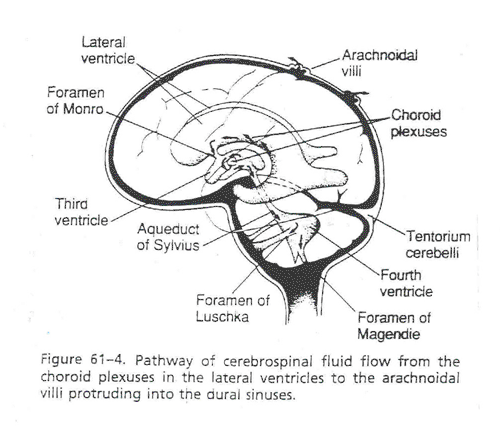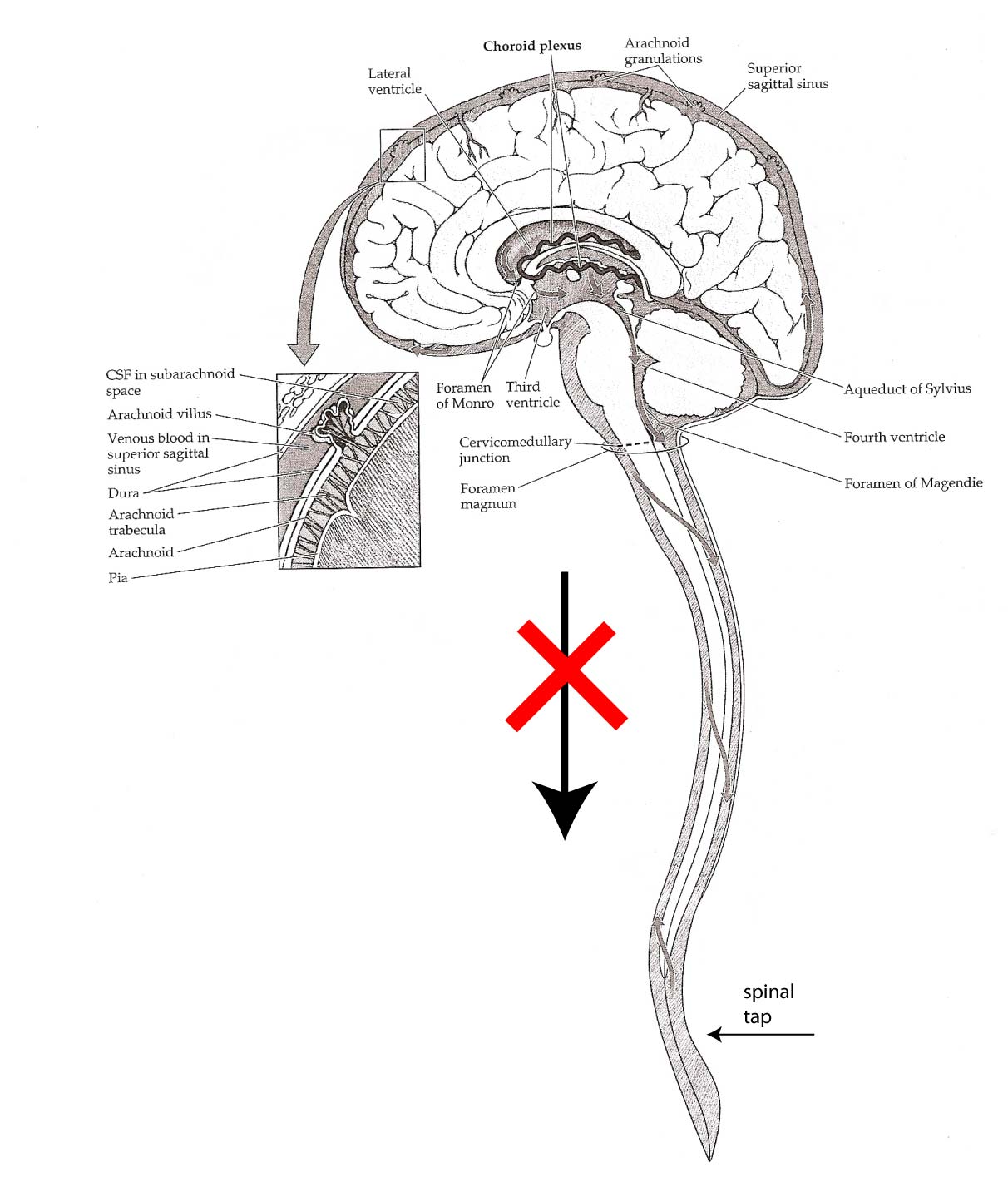B. The Cerebro Spinal Fluid System:
|
|
1. CSF is required to nourish brain tissue and to protect the brain from blows to the head (floating brain), together with the skull. However, because of the inertia of the fluid and the brain, there is a potential danger of the “contrecoup” (brain damage at the other side of the blow). Typical; a boxer will have most damages in the occipital cortex -> partial blindness. |
2. CSF is produced by the choroid plexuses located in all four ventricles, most in the lateral ventricles. Every day about 500 ml CSF is produced. The total quantity in a normal brain is about 150 ml; there is therefore a 3-4x daily renewal of all CSF. |
3. CSF flows from the Lateral ventricles, through the foramen of Monro into the Third ventricle and, through the Aqueduct of Sylvius, into the Fourth ventricle. This ventricle is connected though two foramina of Luschka and the foramen of Magendie into the Cisterna Magna. From there, fluid flows through the (sub)arachnoidal space and reaches the arachnoidal villi. |
4. The arachnoidal villi are actually valves between the brain fluid and the venous system. If the brain fluid pressure is higher than the local venous pressure (about 10 mm Hg), then CSF will flow into the veins and back to the heart.
|
5. Measuring CSF pressure is done with a spinal tap. Buf before you do this, you MUST check for one thing!! The absence of papilledema. (indication of raised intracranial pressure -> risk of hernation of the brain stem -> acute death. |
5b. The sclera of the eye is connected by dura with the dura of the brain, which runs along the optic nerve. So, if the cerebral pressure is increased, then the pressure around the optic nerve is increased and also at the exit of the optic nerve from the eye; the papill. |
5c. The pressure in the eye is normal. Therefore the high pressure in brain/optic nerve will push fluid into the papil. Also, this high pressure will impede venous flow from the retina. Together, this causes papilledema. |
6. Spinal tap: Patient lies sideways and horizontal. A spinal needle is inserted in the lumbar spinal canal. The needle is connected to a long transparent tube that is open at the top. Normal CSF pressure: 130 mm (= 10 mmHg) |
7. Why check? Because if the cerebral pressure is high, then this may cause herniation of the medulla into the spinal canal -> acute death! |
8. With a spinal tap, you can also do the Queckenstedt test! (= blocking the jugular veins will impede the exit of cerebrospinal fluid through the arachnoidal villi which will immediately increase the cerebrospinal pressure! Used in the old days to detect spinal stenosis). |

